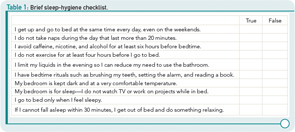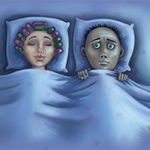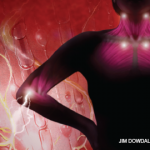Once you’ve identified the problem behaviors, encourage your patient to make changes and set concrete, but easily achievable, goals. It can be helpful to reassure patients that millions of people experience sleep disturbances and that the good news is that sleep problems can be frequently addressed with behavioral changes alone. If patients do not respond to simple sleep hygiene interventions, a referral to cognitive-behavioral therapy could be a good next step.
ad goes here:advert-1
ADVERTISEMENT
SCROLL TO CONTINUE
Dr. Hassett is an associate research scientist in the department of anesthesiology at the University of Michigan Medical School and Chronic Pain and Fatigue Research Center in Ann Arbor, Mich.
References
- Louie GH, Tektonidou MG, Caban-Martinez AJ, Ward MM. Sleep disturbances in adults with arthritis: Prevalence, mediators, and subgroups at greatest risk. Data from the 2007 National Health Interview Survey. Arthritis Care Res. 2011;63:247-260.
- Chiu YH, Silman AJ, Macfarlane GJ, et al. Poor sleep and depression are independently associated with a reduced pain threshold. Results of a population based study. Pain. 2005;115:316-321.
- Wolfe F, Clauw DJ, Fitzcharles MA, et al. Fibromyalgia criteria and severity scales for clinical and epidemiological studies: A modification of the ACR Preliminary Diagnostic Criteria for Fibromyalgia. J Rheumatol. 2011;38:1113-1122.
- Buysse DJ, Reynolds CF 3rd, Monk TH, Berman SR, Kupfer DJ. The Pittsburgh Sleep Quality Index: A new instrument for psychiatric practice and research. Psychiatry Res. 1989;28:193-213.
- Hays RD, Martin SA, Sesti AM, Spritzer KL. Psychometric properties of the Medical Outcomes Study Sleep measure. Sleep Med. 2005;6:41-44.



